The document discusses the development and architecture of a data storage system called Aesop, which bridges SQL and NoSQL databases for scaling e-commerce operations. It highlights the challenges of data consistency, caching, and the use of a polyglot persistence approach, showcasing the system's ability to handle changes in data capture and propagation effectively. Aesop supports multiple data stores and aims to deliver updates reliably, although it operates on an at-least-once delivery model without a global ordering across different data stores.
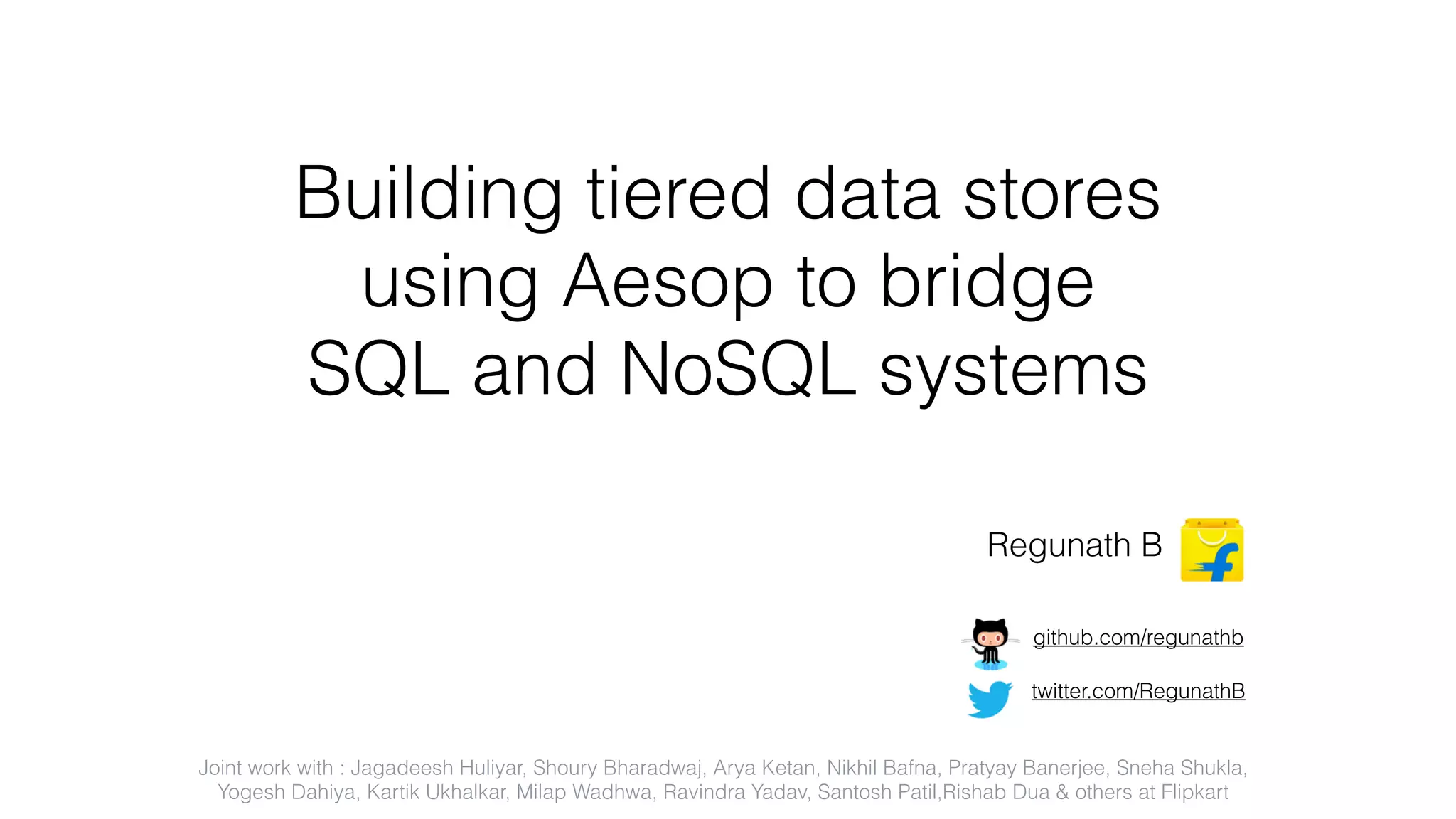
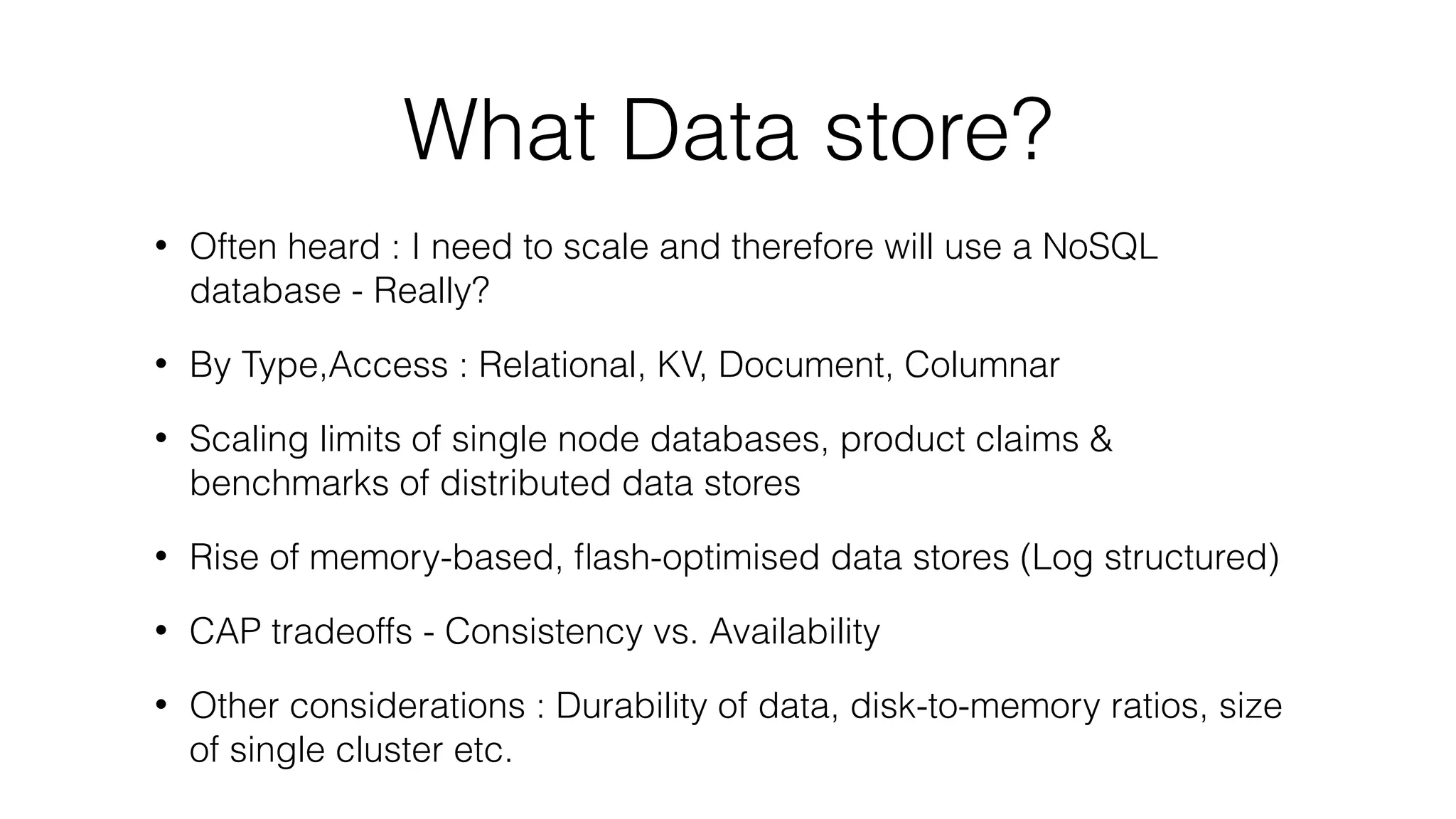


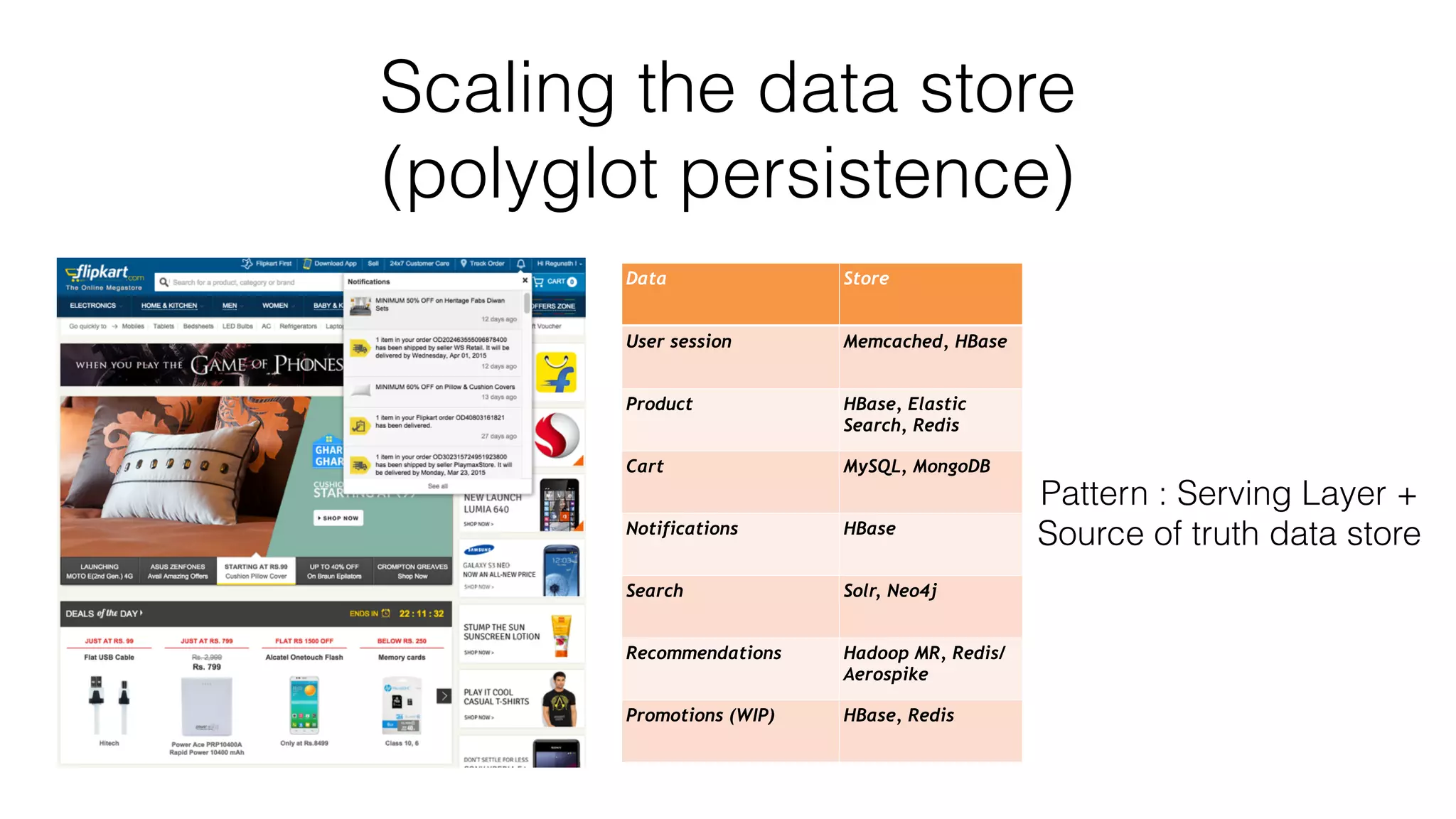

![Data Flow TransactionDetails txn_id merchant_id amount type status bank_name Payments Denormalised DB (Refunds, Consoles) [MySQL] TransactionSaleDetail TransactionSummary TransactionMaster Archive DB (Regulatory Req.) [HBase] txn_id merchant_id amount type txn_id status message txn_id payment_method bank_name TransactionSaleDetail TransactionSummary TransactionMaster txn_id merchant_id amount type Payments DB (online,live TXNs) [MySQL] txn_id status message txn_id payment_method bank_name TransactionDetails Analytics & Reporting DB (Reports, Queries) [HBase] txn_id merchant_id amount type status bank_name pmt_method message](https://image.slidesharecdn.com/buildingtiereddatastoresusingaesoptobridgesqlandnosqlsystems-150717102337-lva1-app6892/75/Building-tiered-data-stores-using-aesop-to-bridge-sql-and-no-sql-systems-7-2048.jpg)




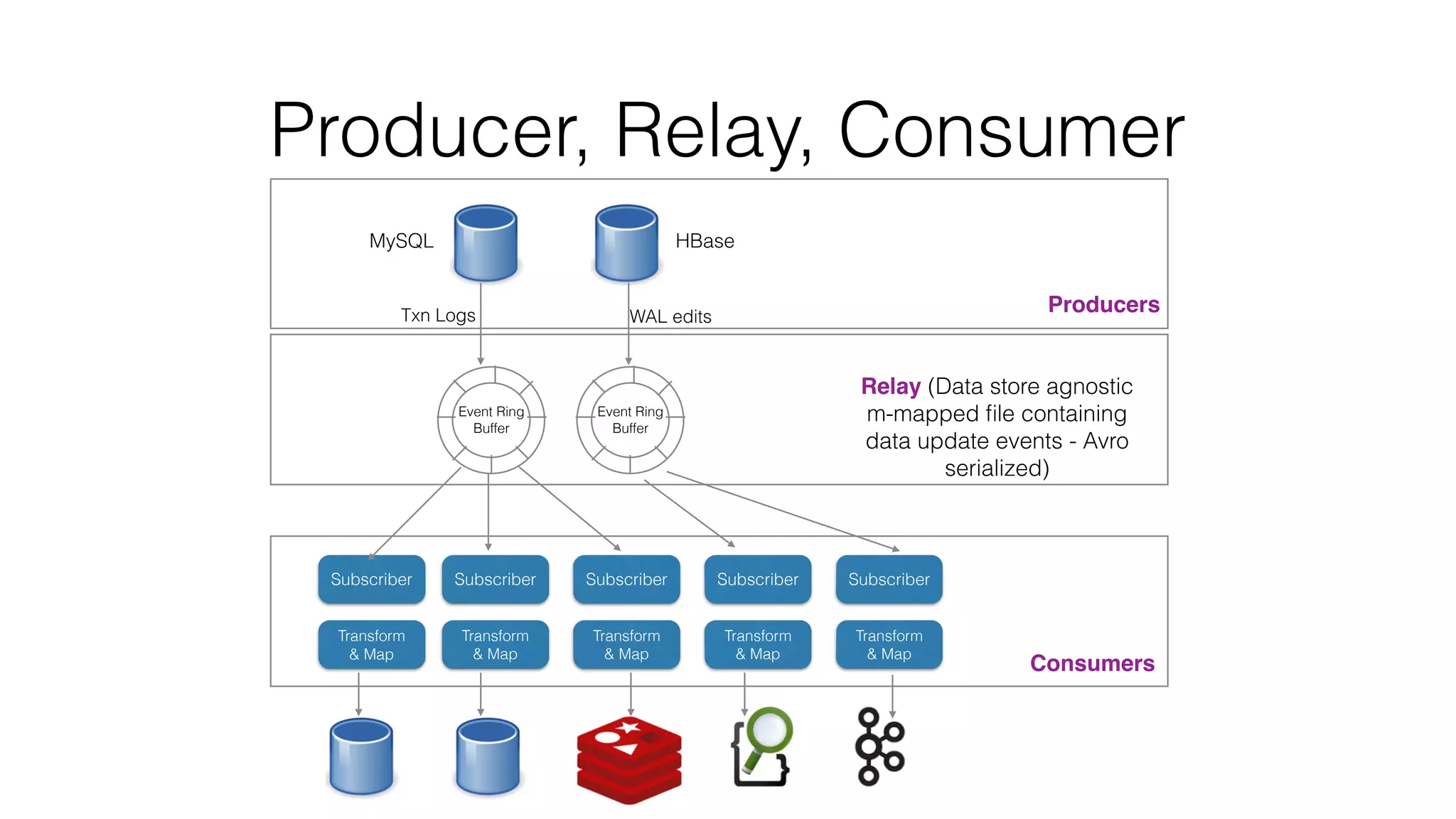
![Log Mining (Old wine in new bottle?) • "Durability is typically implemented via logging and recovery.” [1] Architecture of a Database System - Michael Stonebraker et.al (2007) • "The contents of the DB are a cache of the latest records in the log. The truth is the log. The database is a cache of a subset of the log.” - Jay Kreps (creator of Kafka, 2015) • WAL (write ahead log) ensures: • Each modification is flushed to disk • Log records are in order](https://image.slidesharecdn.com/buildingtiereddatastoresusingaesoptobridgesqlandnosqlsystems-150717102337-lva1-app6892/75/Building-tiered-data-stores-using-aesop-to-bridge-sql-and-no-sql-systems-13-2048.jpg)
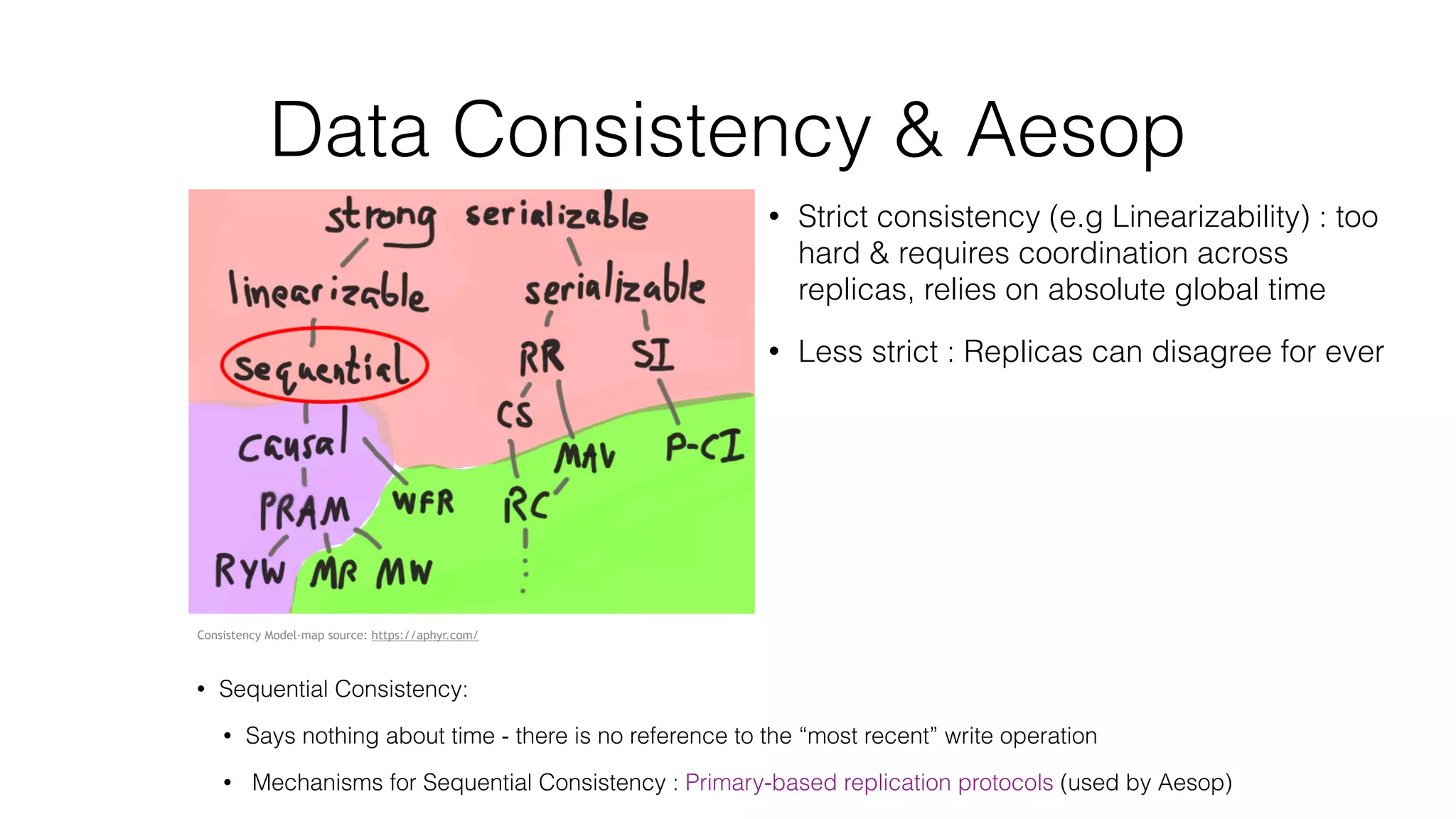
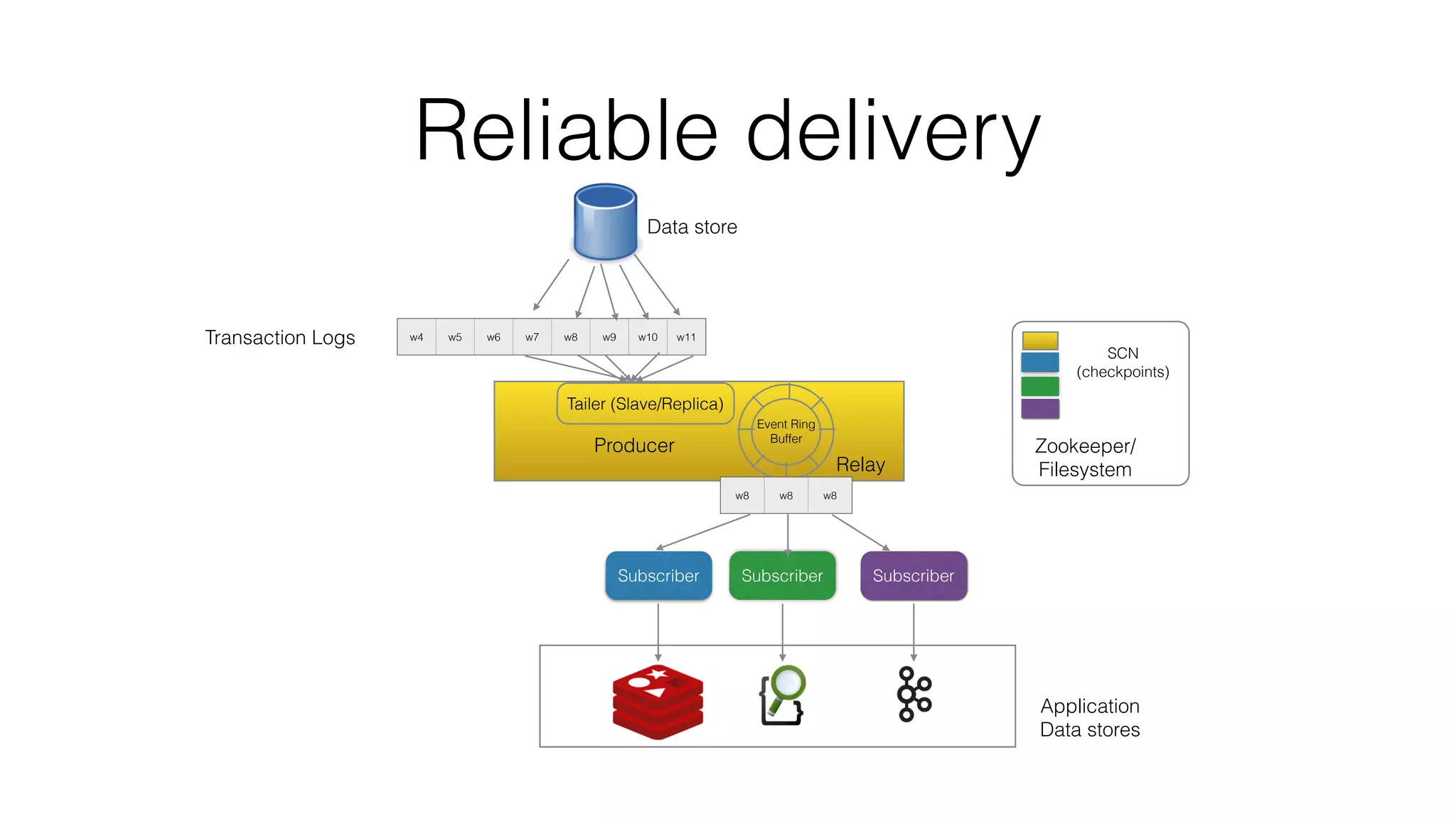
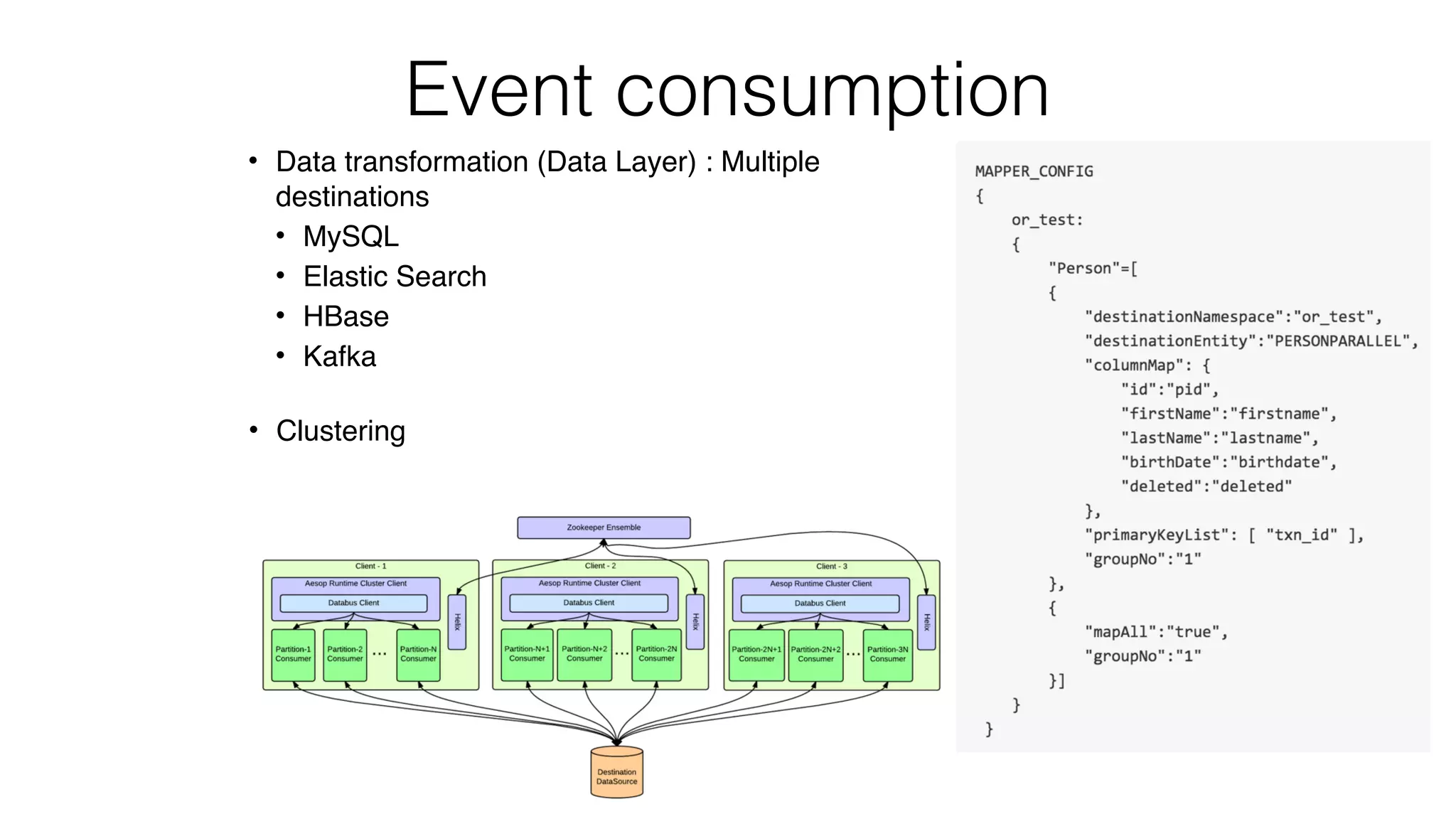

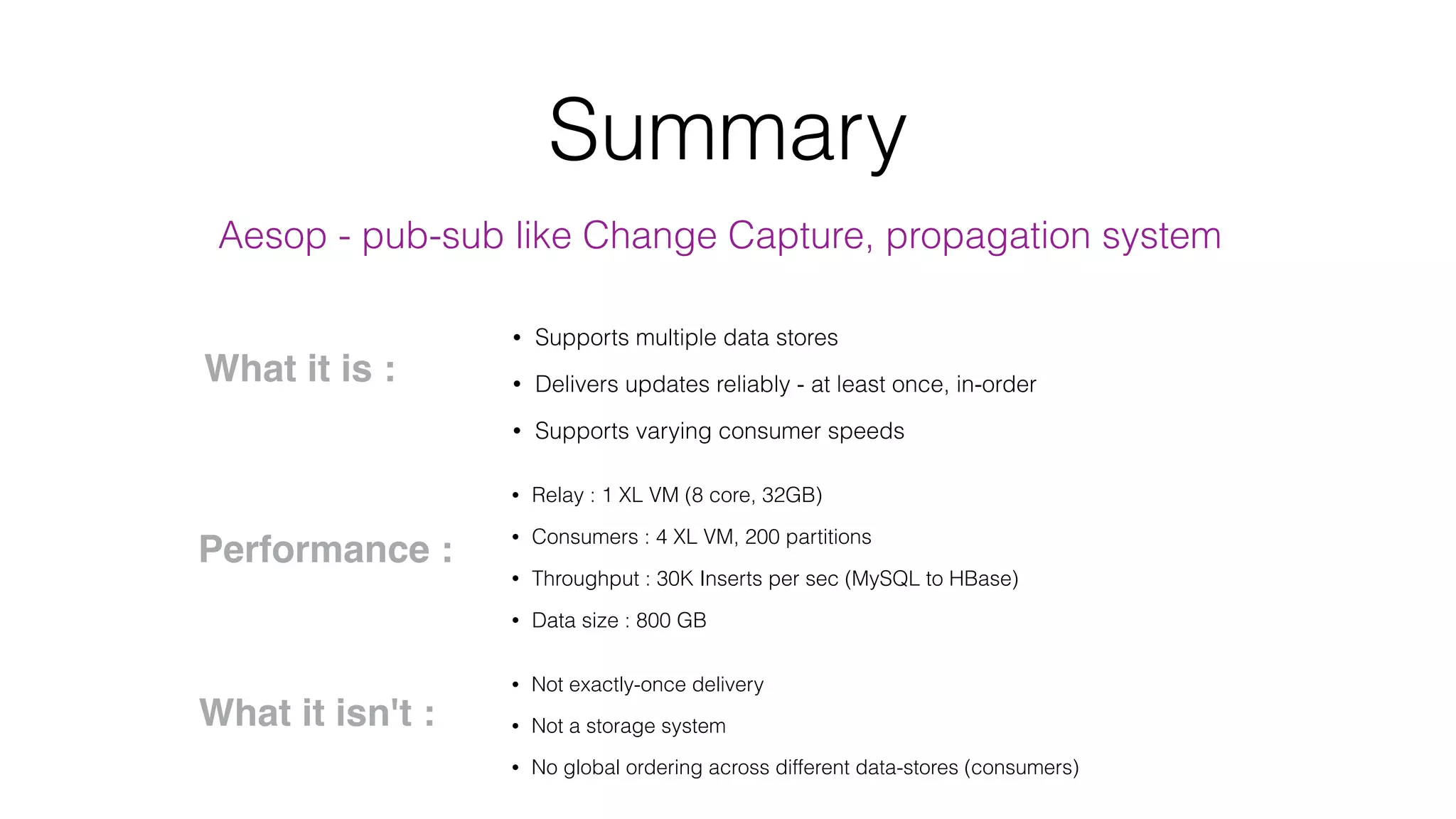
![More details.. • Open Source : https://github.com/Flipkart/aesop • Support : aesop-users@googlegroups.com • Multiple production deployments at Flipkart Project : Related Work : • LinkedIn Databus • [2] Facebook Wormhole • [1] Architecture of a Database System : http:// db.cs.berkeley.edu/papers/fntdb07-architecture.pdf • [2] Wormhole Paper: https://www.usenix.org/system/ files/conference/nsdi15/nsdi15-paper-sharma.pdf References :](https://image.slidesharecdn.com/buildingtiereddatastoresusingaesoptobridgesqlandnosqlsystems-150717102337-lva1-app6892/75/Building-tiered-data-stores-using-aesop-to-bridge-sql-and-no-sql-systems-19-2048.jpg)